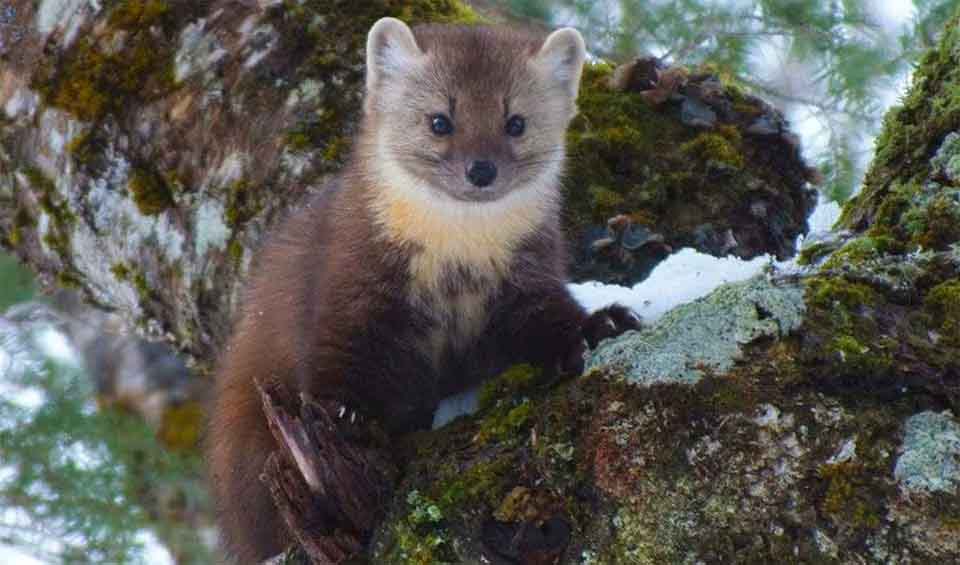Cloaked in a lustrous coat of fur, the American pine marten’s dorsal region boasts a striking hue of light brown, accentuated by a distinctive cream-colored patch adorning its chest. Meanwhile, the fur on its head assumes a captivating grey hue, while its limbs and tail are swathed in hues of black or dark brown, adding to its aesthetic allure.
While renowned for their adeptness in both swimming and climbing, American pine martens exhibit a preference for foraging and hunting on the forest floor, where they can efficiently pursue their prey. Despite this preference, they are equally at home amidst the canopy of trees, where they spend much of their leisure time traversing the branches in search of sustenance and shelter. During the winter months, American pine martens showcase their resourcefulness by tunneling beneath the snow, enabling them to continue foraging for food and navigating their snowy surroundings with ease.
In terms of diet, American pine martens display a diverse palate, consuming a wide array of prey species and plant matter to meet their nutritional needs. Their menu includes fish, frogs, insects, birds, seeds, nuts, fruits, and berries, each contributing to their well-rounded diet. However, among their culinary preferences, squirrels reign supreme, with American pine martens demonstrating a distinct fondness for these arboreal rodents.
Beyond their dietary habits, American pine martens play a vital ecological role as both predators and prey within their native ecosystems. As efficient hunters of small mammals, birds, and insects, they contribute to the regulation of prey populations, helping to maintain ecological balance within their habitat. Moreover, American pine martens serve as a valuable food source for larger predators, such as owls, hawks, and coyotes, forming an integral component of the intricate web of life within their ecosystem.
Distribution
 Canada
Canada United States
United StatesAnything we've missed?
Help us improve this page by suggesting edits. Glory never dies!
Suggest an editGet to know me
Terrestrial / Aquatic
Altricial / Precocial
Polygamous / Monogamous
Dimorphic (size) / Monomorphic
Active: Diurnal / Nocturnal
Social behavior: Solitary / Pack / Herd
Diet: Carnivore / Herbivore / Omnivore / Piscivorous / Insectivore
Migratory: Yes / No
Domesticated: Yes / No
Dangerous: Yes / No




